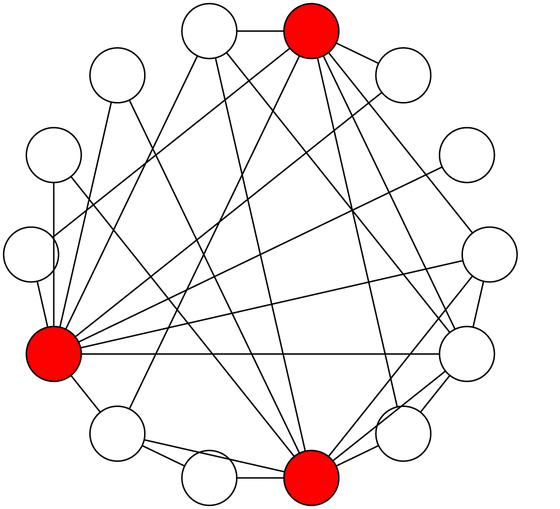Why does something that feels 'popular on SNS' 'isn't really popular'?

Everyone has the experience that they often see it on SNS, but they never even heard of it as reality. This mysterious phenomenon is caused by the fact that 'only a few
The 'Majority Illusion' in Social Networks
https://journals.plos.org/plosone/article?id=10.1371/journal.pone.0147617
Your Network's Structure Matters More than Its Size
https://hbr.org/2016/02/your-networks-structure-matters-more-than-its-size
The 'Majority Illusion': A Mind Trick That'll Change Your Approach to Influencer Marketing
https://blog.hubspot.com/marketing/majority-illusion-influencer-marketing
Christina Rahman and his colleagues at the Institute of Information Science, University of Southern California, have discovered a phenomenon that occurs within a social network called 'Majority Illusion.' Due to this phenomenon, 'a user with a large number of followers, such as influencers, posts ideas, opinions, products, etc., looks much more popular than it really is,' the research team says.
The explanation using the illustrations by the research team is as follows. Circles indicate users, red circles indicate users who are posting specific opinions, and lines connecting circles indicate that each user is related by following, etc. I will. For all 14 users, the number of users with red circles sending out specific opinions is 3 and a minority.

However, the illusion that 'there is a trend on SNS' may occur even if the number of users who are sending a specific opinion is very small. For example, consider the user with the red frame below. Looking at the lines from this user and tracing the relationships...

The following 4 people have a relationship. Three out of four are Akamaru users who send out specific opinions. Under this circumstance, the misconception is that 'most of the people who know speak about a particular thing.'

Even if you focus on a different user...

Akamaru users that 2 out of 3 are sending out specific opinions. In the illustration below, no matter which white circle user you focus on, the majority of users who are involved will be red circle users.

The above-mentioned “majority illusion” occurs when users such as “influencers” who have many followers send their opinions.
Rahman et al. analyzed how the “majority illusion” works by setting the number of relationships for each user. According to Rahman et al., the 'majority illusion' is most likely to occur in 'a niche community where only a handful of users are popular.' The 'majority illusion' may cause some influencers to have too much influence in the community, and less relevant members to be swayed by that influence, Raman and colleagues note.
Raman et al. warn that the 'majority illusion' can dramatically affect collective phenomena. For example, if some 'drinker' users are very popular, even if you think 'Let's check the amount of other people's drinks,' there will be a phenomenon in which only the drinker's drink amount will be noticed. There are many people who drink more alcohol than they do.' 'This may be the reason why there is a tendency for college students to overestimate their alcohol consumption in their generation ,' Rahman and colleagues explained.
Rahman and colleagues say that some ideologies, political opinions, and so on can also seem much more general than they really are, due to the 'majority illusion.'
Related Posts:
in Web Service, Science, Posted by darkhorse_log







